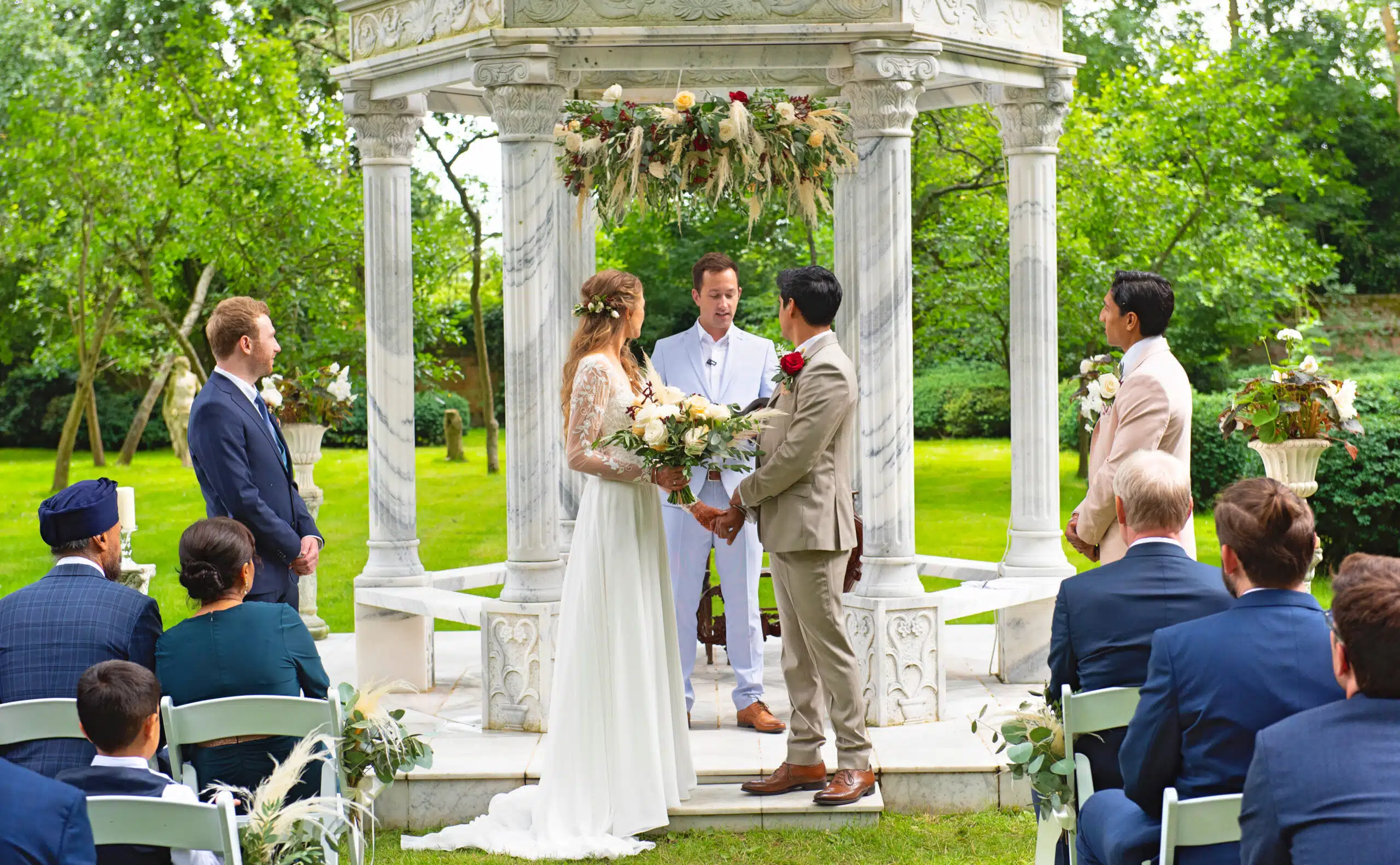Planning a wedding involves many important decisions, and one of the most crucial is choosing the type of ceremony you want. While some couples lean toward traditional religious or civil ceremonies, others are increasingly drawn to the personalization and flexibility offered by celebrant-led ceremonies. Understanding the difference between these options can help you decide what fits your values and vision best.
Structure and Flexibility
One of the key differences between a traditional and celebrant-led ceremony is the level of structure and creative freedom.
Traditional Ceremony
Traditional ceremonies, whether religious or civil, typically follow a predetermined structure. A religious wedding might be guided by scripture, liturgy, and time-honored rituals, while a civil ceremony usually adheres to government-mandated legal formats. These events often leave little room for personal expression, with specific wording and steps that must be followed.
Celebrant-Led Ceremony
In contrast, a celebrant-led ceremony offers complete flexibility. You can write your own vows, include personal stories, choose your own readings, and decide on the tone—whether it’s formal, fun, romantic, or a mix. A celebrant tailors every part of the ceremony to suit the couple, making it feel more intimate and reflective of their unique relationship.
Legal Requirements
Another important distinction lies in the legal aspect of the marriage.
Traditional Ceremony
In most countries, traditional religious and civil ceremonies are legally binding. The officiant—whether a priest, minister, or registrar—is authorized to conduct weddings and submit the necessary paperwork to register the marriage.
Celebrant-Led Ceremony
Celebrant-led ceremonies are often not legally binding on their own, depending on local laws. Couples may need to legally register their marriage separately at a registry office. However, this also allows them to separate the legal process from the personal celebration, giving them the freedom to focus fully on the ceremony without legal constraints.
Personalization and Meaning
The level of personalization in a ceremony can greatly affect how meaningful it feels to the couple and their guests.
Traditional Ceremony
Traditional weddings are often grounded in religious or cultural practices that prioritize tradition over personal expression. While they can include some customization, like selected readings or music, the core of the ceremony remains largely fixed.
Celebrant-Led Ceremony
A celebrant puts the couple’s story at the heart of the ceremony. They work closely with the couple to learn about their journey, values, and hopes for the future. This allows them to create a script that feels genuinely personal and emotionally resonant. The result is a ceremony that not only celebrates the legal union but the relationship itself.
Location Flexibility
Where you hold your ceremony can also differ greatly depending on the type of officiant you choose.
Traditional Ceremony
Traditional weddings usually take place in set venues like places of worship or licensed government buildings. In many cases, these venues are limited to what is legally approved or designated for religious use.
Celebrant-Led Ceremony
Celebrant-led ceremonies can take place virtually anywhere. Whether it’s a beach, garden, mountain, or even your own backyard, there are no restrictions on location—making it easy to choose a spot that holds personal meaning.
Inclusivity and Beliefs
The ability to accommodate different beliefs and cultural backgrounds is another area where celebrant-led ceremonies often stand apart.
Traditional Ceremony
Religious ceremonies typically adhere to the beliefs and doctrines of a specific faith. This can sometimes exclude couples of different faiths, same-sex couples, or those with non-religious beliefs. Civil ceremonies may be more inclusive but are usually restricted from including any religious references.
Celebrant-Led Ceremony
Celebrants welcome all couples and belief systems. Whether you’re blending religious backgrounds, part of the LGBTQ+ community, or want a spiritual but non-religious ceremony, a celebrant can craft a service that honors who you are. This inclusivity makes celebrant ceremonies particularly appealing for modern couples.
Tone and Atmosphere
The mood and atmosphere of your ceremony can shape the experience for both you and your guests.
Traditional Ceremony
Traditional ceremonies often carry a formal, solemn tone. While this formality can provide a sense of tradition and gravity, it may not resonate with every couple’s style or personality.
Celebrant-Led Ceremony
Celebrant-led ceremonies can be as formal or relaxed as you wish. Whether you want laughter, sentimentality, or something in between, the celebrant works with you to strike the right tone. This makes it easier to create a heartfelt and enjoyable experience for everyone involved.
Conclusion
The main difference between a celebrant-led ceremony and a traditional one lies in the level of flexibility, personalization, and inclusivity. Traditional ceremonies offer a strong sense of structure, legality, and heritage, which some couples find reassuring. On the other hand, celebrant-led ceremonies put your love story at the center, giving you the creative freedom to design a celebration that truly reflects who you are.
Whether you want a classic ceremony steeped in tradition or something unique and tailored to your journey, the most important thing is choosing the format that feels right for you. With a celebrant-led ceremony, your wedding becomes more than just an event—it becomes a deeply personal expression of your love.
Keep an eye for more latest news & updates on Daily!



